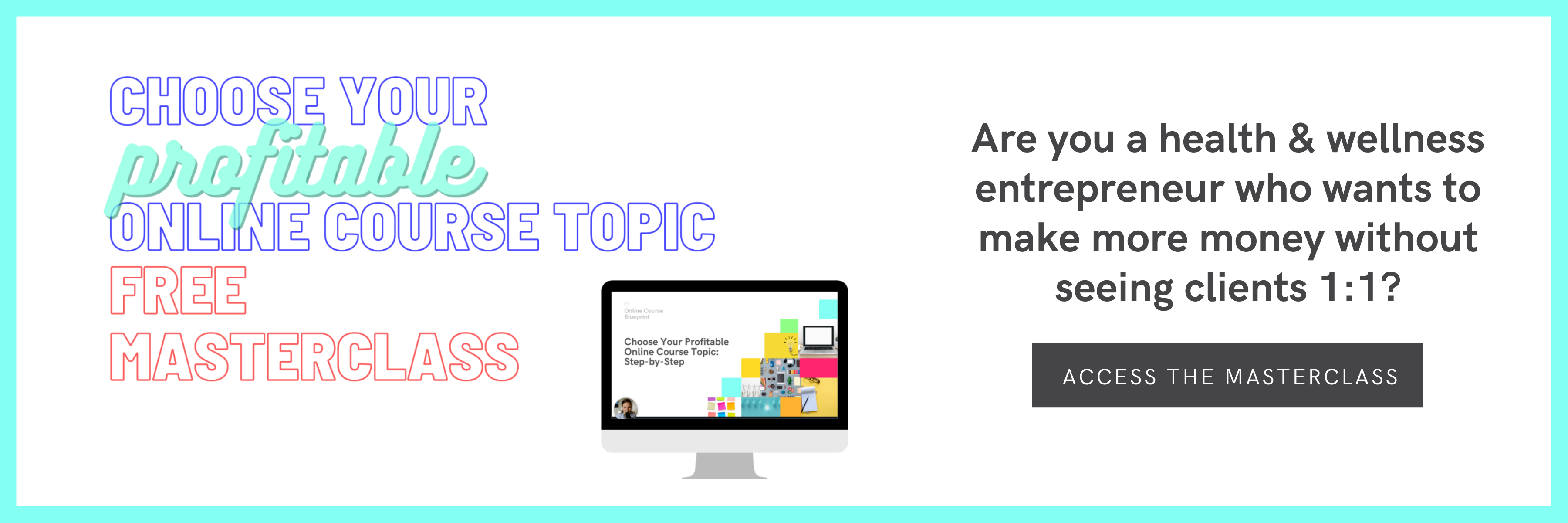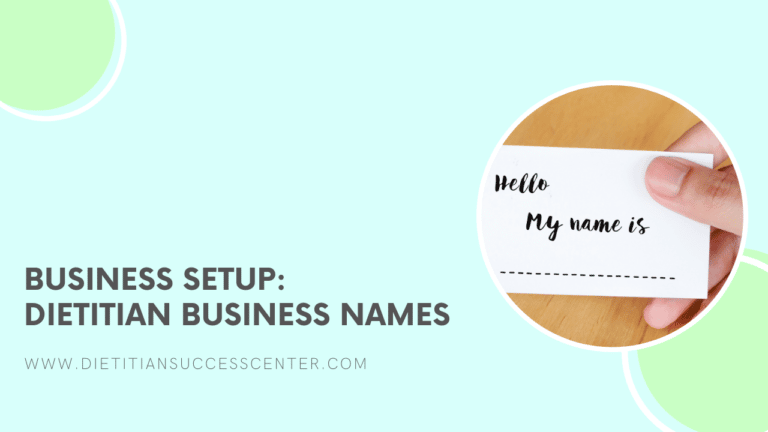
Hey, Krista here!
I am a Registered Dietitian, business and online course creation coach, and the founder and CEO of Online Course Blueprint and Dietitian Success Center.
In this post, I’m going to cover the 5 online course crestion checklist steps you should take when you’re thinking about creating an online course. I know it can feel overwhelming. You may have an idea of what you want to create, but you’re just not sure where to go from here.
Often, I see people making the mistake of jumping right into the tech stuff first. They have an idea for their course, and then they go straight to what platform to use. When in fact, there are so many other steps to take before you get to that point.
So, let’s walk through a simple online course creation checklist – outlining the first 5 steps to take when you’re getting started with your online course.
If you are a health & wellness entrepreneur who wants to make more money without seeing clients 1:1, check out my FREE online course creation course on how to choose your profitable online course topic. You will walk away with your course topic nailed down so you can start building your passive income empire.

Let’s get into the online course creation checklist steps:
Step 1: Know who you are creating your online course for
A profitable online course (ie. a course that sells), is a course that solves a problem for somebody. In order for us to know what problem we’re solving with our course, we have to first understand who our target audience is.
Once we know who our target audience is, we can then understand their challenges, which will form the basis of our online course curriculum.
Step 2: Consumer research
We want to do a little bit of consumer research before we jump into creating our course.
If you have worked with your target audience (from step 1) a lot before, you may not have to spend too much time in this area. But if you haven’t, definitely spend some time here.
Oftentimes we tend to create things that we want to teach, as opposed to what people want to learn and what they will pay for. We need to get the right alignment between what we’re interested in teaching, but also what people will pay for and what people want to learn.
Doing consumer research before we get into the course creation process, ensures that we’re creating the right thing and that it’s positioned properly for our ideal client.
So how do we do consumer research?
There are many different ways that you can do consumer research. It depends on how much time and energy you want to put into this process.
Here are some ideas:
-
- 10-minute one-on-one meetings with people within your target audience. Reach out to people who you feel like fit your ideal client profile and will give a lot of really good, honest opinions.
-
- Small virtual focus groups with a group of your target audience.
-
- Create a simple Google Forms survey and send it out to a few people.
You may need to incentivize to get feedback from people. That’s okay! If it means spending $30 on Starbucks gift cards in order to get really good insights, that will be worth it in the long run!
I know it might feel intimidating, but don’t skip this step!
Step 3: Define the transformation
A course should be the roadmap that gets somebody from point A to point B. We can think of this transformation as a “before and after”.
How does somebody feel before they take your course and how do they feel after?
Once we understand the transformation that needs to be achieved, we can break it down. What are the topics that I need to teach to get them from point A to point B?
This makes the whole curriculum development process so much easier.
Step 4: Define and outline the curriculum
What are we teaching to achieve the transformation?
We’re not just jumping into the tech stuff!
We want to take some time and break down our curriculum because, at the end of the day, we want to make sure that our course is solving the problem. When a course solves the problem, then it sells itself. People talk about it with their friends and their family and they promote it for you!
A quick reminder here that you don’t want to overwhelm people with too much information here. If you’ve worked with people one-on-one before, you probably know that they’re more likely to be successful if you give them just a couple of key things to work on, as opposed to giving them a massive laundry list of items. The same thing applies for an online course, choose just the key pieces that they need to know.
Step 5: Map out modules and course lessons
This is where we start to take the topics from step four and organize them into the blueprint of our online course (modules and lessons).
Let’s define some of the terminologies here. I like to use the words: “modules” and “lessons”.
-
- Modules are like chapters in a book.
-
- Lessons are what are taught within each chapter of that book.
Think about a textbook that you read at some point in your life. The chapters in a textbook are related to the main theme and each chapter contains lessons.
So that’s how I think about an online course, too.
Online Course Creation Checklist
The first five steps to take when you’re creating your very first online course are:
1. Know who your ideal client is
2. Do your consumer research
3. Define the transformation
4. Map out the curriculum
5. Outline the course modules and lessons
Want to transform your knowledge into a scaleable, income-generating online course?
Online Course Blueprint is a self-paced program specifically designed for health & wellness practitioners that gives you the EXACT step-by-step process to create, market and sell your very own online course.









